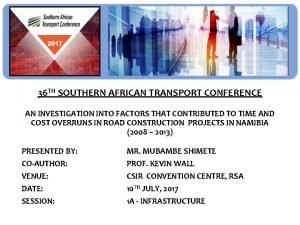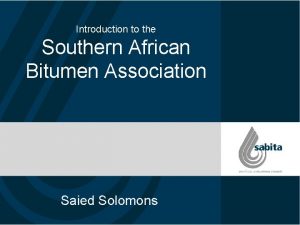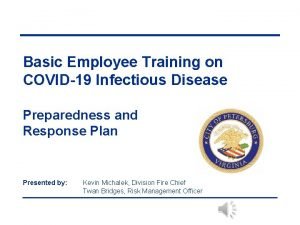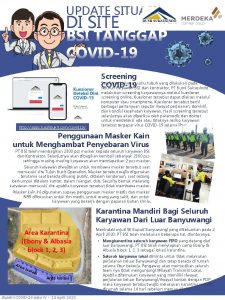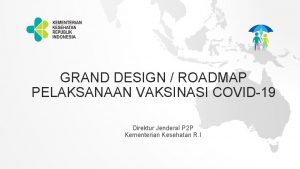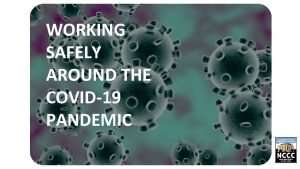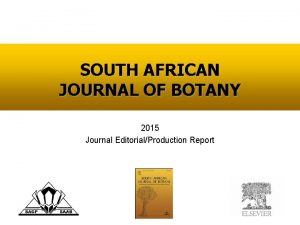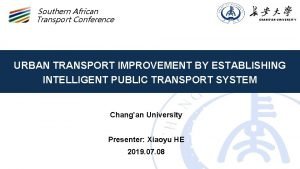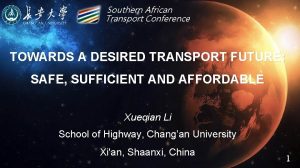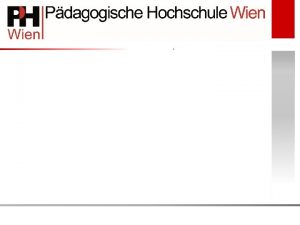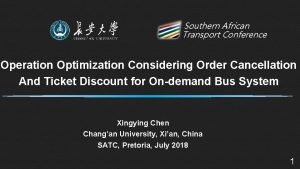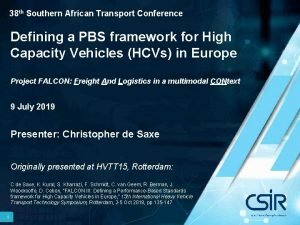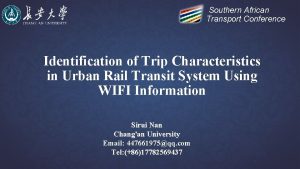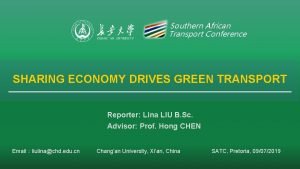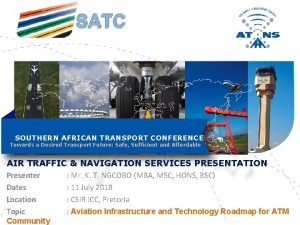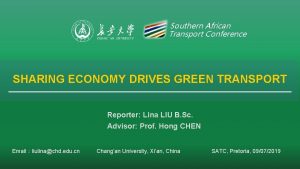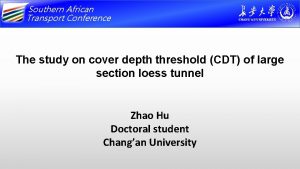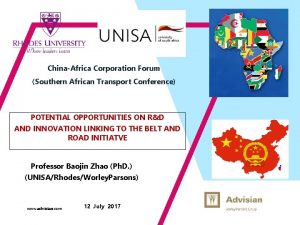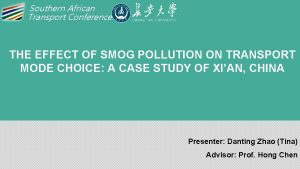Southern African Transport Conference The Impact Of Covid19



















- Slides: 19

Southern African Transport Conference The Impact Of Covid-19 On Public Transport 7 October 2020

CONTENTS 1. Pre Covid 19 2. Direct Covid-19 Impact 3. Indirect Covid-19 Impact 4. Post Covid

01 PRE COVID -19

PRE COVID 19 Globally a year ago the driving forces shaping transport policy and development were: • Globalisation • Urbanisation • Global warming, green-house gasses and pollution • Fourth Industrial Revolution relating to disruption of the Energy and Transport sectors and Big Data

PRE COVID 19 In South Africa things weren’t that rosy before Covid 19 • Economy • Employment • Credit Rating • Decreased funding for public transport • Public vs Private Transport Share • Rail Share of Market But work was continuing • Establishment of Gauteng Transport Authority • Planning for Gautrain extensions • PRASA rolling stock from Gibela • Intelligent Transport Systems • Subsidy policy review

02 DIRECT COVID RESPONSE

COVID 19 Falling demand contagion risk have caused a drastic reduction in transport services all over the world This might not be the first time that communities have had to suspend or limit transport for health reasons, but the scale of these restrictions are unprecedented

COVID 19 Immediate Responses: • Disinfection: potent and frequent cleaning routines to disinfect rolling stock and premises plus hand sanitizer and portable hand washers, for both users and workers • Physical distancing: This includes practical steps to limit bottlenecks at turnstiles and boarding platforms • Communications: discourage unnecessary travel, put down floor stickers to mark adequate spacing, and display medical help information • Contact tracing technology: digital platforms to help locate potentially contagious individuals and those in contact with them • Service adjustments: adjusting service schedules (frequencies, operating times, number of routes) to minimize overcrowding • Improved connectivity for health care providers and other essential workers • Shifting passenger traffic from public transport to other modes

COVID 19

COVID 19 Gautrain Objectives: • • • Secure system in Level 5 and minimise theft and vandalism Be a responsible and safe service provider Reopen as soon as possible Position Gautrain as an essential service Communicate with stakeholders and passengers Under all lockdown levels 880, 037 train ; 277, 217 bus and 80, 448 midi bus passengers • Up to 25% of pre-Covid levels

COVID 19 South African Covid 19 Data • Peak of Infection in Mid July • Peak of Deaths in Early August

COVID 19

03 INDIRECT COVID 19 IMPACT

INDIRECT COVID 19 IMPACT World Bank identified 5 broad categories of recovery actions from shorter to longer term: • Immediate: Conduct quick top-down and bottom-up financial analyses to estimate revenue losses, payment gaps, liquidity needs, and solvency capacity for public transport authorities, operating companies, and other service providers • 30 days: Deploy instruments for liquidity support, including cash injections through supply-side subsidies or adjusting per-km fares. Provide fastdisbursing credit lines offering guaranteed, low-interest loans to support short-term working capital needs • 2 - 4 months: Develop institutional, policy, and financial packages to help informal transport service providers • 3 - 6 months: Improve technical fare structures (i. e. , paying for operations, fare collection, system management, or infrastructure availability) and boost complementary, non-fare sources of funding (commercial real estate, advertising, parking charges) • Around 12 months: Renegotiate, amend or prepare new terms for provision of public transport services

INDIRECT COVID 19 IMPACT Initial Assessment model developed with assumptions on: • economic activity • employment impact • employees work from home • Covid 19 waves and possible vaccine rollout • % potential Gautrain Customers travel by car • capacity constrained by social distancing Other factors are: • air travel • public perception of risk • road congestion • fuel price

INDIRECT COVID 19 IMPACT Some early conclusions: • A huge range in outcomes of recovery time depending on assumptions • Too many unknowns • Recovery range to pre-Covid demand is probably between 18 months and 36 months • There will never be a return to the way things were • Must be innovative and adaptable • Must look for additional revenue sources • Must develop new products and new markets

04 POST COVID

POST COVID-19 Response • Redefined safety, reduced loading, better demand management • Financial support to operators across whole range of public transport • Use this to formalise integrated planning and operations • Restore critical Metrorail services (back to 2, 5 million pax per day? ) Economic Crisis Response • Infrastructure as economic stimulus • Gautrain extensions offer very good economic returns • Wider funding models linked to transport oriented developments Climate Change • Population and job growth over next 20 years • A return to old habits of private car use and road based transport will have very poor returns • Twin evils of congestion and environmental harm are awaiting us if we do nothing

THANK YOU
 Southern african transport conference
Southern african transport conference South african transport conference
South african transport conference Southern african bitumen association
Southern african bitumen association What do if test positive covid19
What do if test positive covid19 Http://apps.tujuhbukit.com/covid19/
Http://apps.tujuhbukit.com/covid19/ Vaksin covid19
Vaksin covid19 Do if you covid19
Do if you covid19 Covid19 athome rapid what know
Covid19 athome rapid what know South african journal of botany impact factor 2020
South african journal of botany impact factor 2020 Age cka
Age cka Southern outlook conference
Southern outlook conference Passive transport vs active transport venn diagram
Passive transport vs active transport venn diagram What is passive transport
What is passive transport Active vs passive transport venn diagram
Active vs passive transport venn diagram Unlike passive transport active transport requires
Unlike passive transport active transport requires Bioflix activity membrane transport active transport
Bioflix activity membrane transport active transport Primary transport and secondary transport
Primary transport and secondary transport Primary active transport vs secondary active transport
Primary active transport vs secondary active transport Primary active transport and secondary active transport
Primary active transport and secondary active transport Bioflix activity membrane transport active transport
Bioflix activity membrane transport active transport

